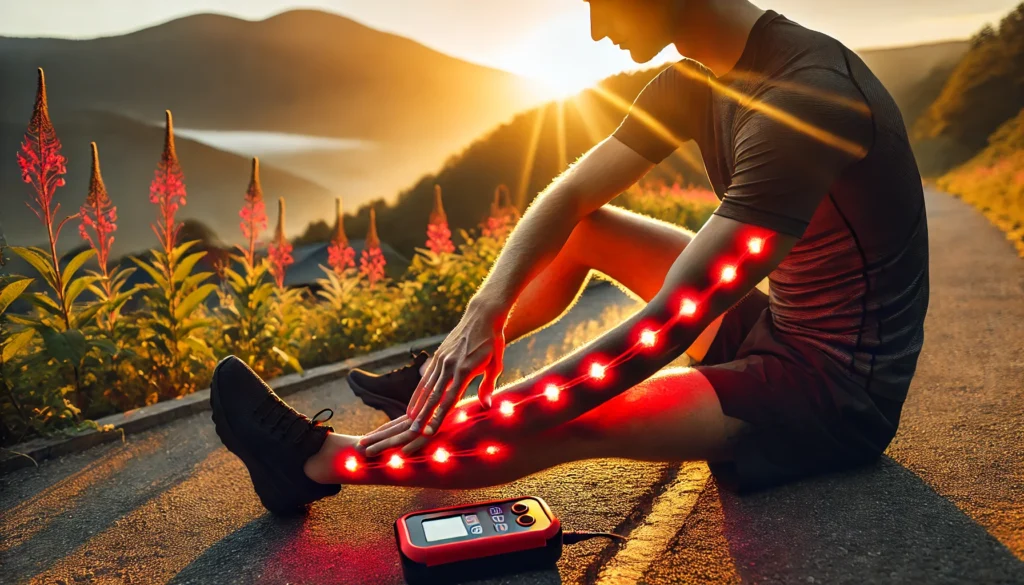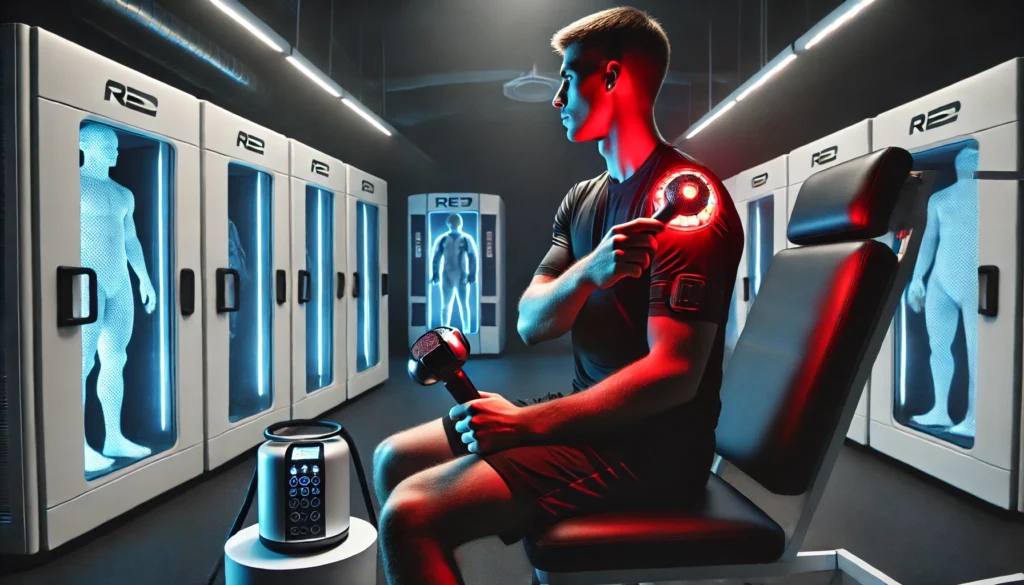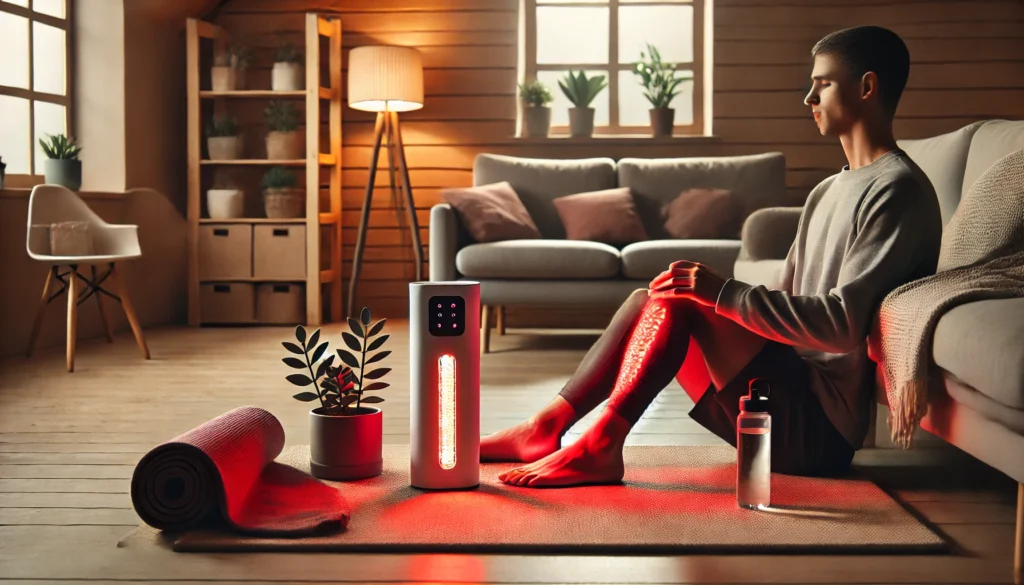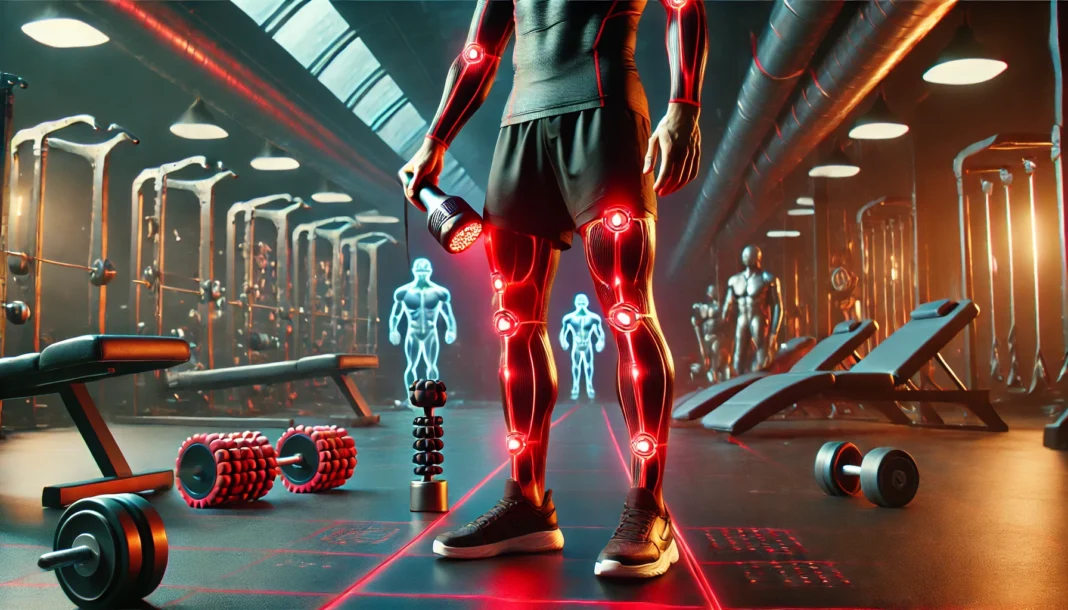Introduction: Revolutionizing Athletic Recovery with Portable Red Light Therapy
Athletes and fitness enthusiasts continuously seek innovative solutions to enhance recovery, reduce muscle soreness, and improve overall performance. One of the most promising advancements in sports recovery is portable red light therapy. This technology, once primarily available in clinical settings, is now accessible through hand held red light therapy devices that allow athletes to experience its benefits anywhere, anytime. By harnessing the power of a red light therapy handheld device, users can accelerate muscle recovery, reduce inflammation, and improve circulation without relying solely on traditional methods.
You may also like: Red Light Therapy for Muscle Recovery: How Athletes Can Speed Healing and Enhance Performance
As scientific research continues to unveil the efficacy of red light therapy, its adoption among athletes, trainers, and rehabilitation specialists has surged. The convenience and effectiveness of portable devices make them a game-changer in sports recovery, offering a non-invasive and drug-free alternative for enhanced muscle healing. Understanding the mechanisms behind red light therapy and its impact on athletic performance is crucial for athletes aiming to optimize their recovery process.
Understanding Red Light Therapy and Its Impact on Muscle Recovery
Red light therapy (RLT) utilizes low-wavelength red and near-infrared light to penetrate deep into the skin and muscles, stimulating cellular repair and reducing oxidative stress. This process, known as photobiomodulation, enhances mitochondrial function, allowing cells to produce more energy and accelerate tissue healing.
For athletes, this means faster muscle recovery, reduced soreness, and improved endurance. When applied immediately after intense workouts, a red light therapy handheld device can significantly decrease delayed onset muscle soreness (DOMS), enabling athletes to train more effectively and with less downtime. By improving circulation and reducing inflammation, red light therapy ensures that muscles receive optimal oxygenation and nutrient supply for efficient recovery.
Beyond muscle recovery, studies have shown that red light therapy can also enhance joint health, making it an essential tool for athletes prone to joint pain and stiffness. The ability to use hand held red light therapy devices at home or on the go provides athletes with a practical and accessible method for ongoing recovery support.
The Science Behind Portable Red Light Therapy and Athletic Performance
Scientific research supports the efficacy of red light therapy in promoting muscle repair and reducing inflammation. When red and near-infrared light wavelengths penetrate the skin, they interact with the mitochondria, boosting adenosine triphosphate (ATP) production. ATP serves as the primary energy source for cellular functions, facilitating muscle repair, reducing oxidative stress, and decreasing muscle fatigue.
This process is particularly beneficial for endurance athletes and strength trainers, as it allows for quicker muscle adaptation and resilience to intense training regimens. Studies have demonstrated that athletes who incorporate portable red light therapy into their recovery routine experience improved muscle performance, reduced injury risk, and enhanced overall stamina.
Additionally, red light therapy has been found to support collagen production, which is essential for maintaining tendon and ligament integrity. This is particularly valuable for athletes engaged in high-impact sports such as running, weightlifting, and contact sports, where soft tissue injuries are common. By integrating a red light therapy handheld device into their routine, athletes can enhance both muscle recovery and injury prevention strategies.

Practical Applications: Integrating Red Light Therapy into an Athlete’s Routine
Incorporating portable red light therapy into a daily athletic routine is simple and convenient. Unlike traditional recovery methods that require extensive rest or professional intervention, hand held red light therapy devices offer flexibility and ease of use. Athletes can apply red light therapy before or after training sessions to maximize its benefits.
For pre-workout applications, using a red light therapy handheld device on targeted muscle groups can improve circulation and warm up the muscles, reducing the risk of strain or injury. Post-workout, applying red light therapy to fatigued or sore areas accelerates the recovery process by reducing inflammation and promoting cellular repair.
Professional athletes and trainers also integrate red light therapy with other recovery methods, such as massage, cryotherapy, and stretching, to create a comprehensive recovery plan. Whether used as a standalone treatment or in conjunction with other modalities, hand held red light therapy provides an effective and non-invasive solution for athletes at all levels.
Frequently Asked Questions (FAQ) on Portable Red Light Therapy for Athletic Recovery
1. How does portable red light therapy compare to professional red light therapy treatments?
Portable red light therapy offers the convenience of at-home use, making it a practical alternative to professional treatments that require clinic visits. While professional treatments may utilize higher-powered devices with larger coverage areas, modern hand held red light therapy devices have advanced significantly, offering comparable benefits. These compact devices are designed with precision targeting in mind, making them ideal for localized treatment of sore muscles and joint pain. Athletes can benefit from daily sessions with a red light therapy handheld device, whereas professional treatments are typically scheduled weekly or biweekly. Additionally, portability allows users to integrate therapy into their recovery routine without disrupting their training schedules, making it a cost-effective and time-efficient option.
2. Can portable red light therapy enhance sleep quality for better athletic recovery?
Yes, portable red light therapy can significantly improve sleep quality, which is essential for muscle recovery and athletic performance. Studies have shown that red light exposure influences melatonin production, the hormone responsible for regulating sleep cycles. Using a red light therapy handheld device before bedtime can help athletes fall asleep faster and achieve deeper, more restorative sleep. Quality sleep enhances muscle repair, reduces inflammation, and boosts overall energy levels. By incorporating hand held red light therapy into their evening routine, athletes can maximize their recovery window and wake up feeling more refreshed and prepared for training.
3. How does red light therapy influence mental recovery and focus in athletes?
Mental recovery is just as crucial as physical recovery for athletes, and portable red light therapy has been shown to support cognitive function. Exposure to red and near-infrared light can stimulate brain activity by increasing oxygen flow and reducing oxidative stress in neural cells. Many athletes report improved focus, mental clarity, and reduced symptoms of stress or anxiety when regularly using a red light therapy handheld device. This enhanced mental state allows for better decision-making, faster reaction times, and more efficient training sessions. Over time, integrating hand held red light therapy into a daily routine can contribute to a more balanced and resilient mindset, reducing the risk of burnout.
4. Can portable red light therapy be combined with other recovery techniques?
Absolutely! Hand held red light therapy works synergistically with various other recovery methods, enhancing their effectiveness. For example, when used alongside foam rolling or massage therapy, red light therapy helps to reduce muscle tension and accelerate healing. Combining a red light therapy handheld device with cryotherapy or cold plunges can further minimize inflammation and promote circulation. Additionally, using portable red light therapy post-workout alongside stretching or mobility exercises can enhance flexibility and reduce stiffness. The key is to experiment with different combinations to find what works best for an individual’s specific recovery needs.

5. How frequently should athletes use a red light therapy handheld device for optimal results?
The frequency of use depends on the athlete’s recovery needs and training intensity. Most experts recommend using hand held red light therapy at least five to ten minutes per targeted muscle group, once or twice per day. Consistency is crucial, as portable red light therapy works best when used regularly over an extended period. Athletes recovering from injuries may benefit from additional sessions to accelerate healing. For general muscle recovery and performance enhancement, incorporating a red light therapy handheld device into a post-training routine can ensure sustained benefits and reduced soreness.
6. Can red light therapy help with chronic injuries or long-term joint pain?
Yes, portable red light therapy is widely used to manage chronic injuries and long-term joint pain. Conditions such as tendonitis, arthritis, and repetitive strain injuries can improve with consistent use of a red light therapy handheld device. The therapy reduces inflammation, increases blood flow, and supports collagen production, all of which contribute to long-term joint health. Many athletes with persistent injuries find that integrating hand held red light therapy into their routine reduces reliance on pain medications and promotes natural healing. Over time, consistent use can lead to improved mobility and overall joint resilience.
7. How does red light therapy impact endurance athletes versus strength athletes?
Both endurance and strength athletes can benefit from portable red light therapy, though the effects may vary based on the type of sport. Endurance athletes, such as runners and cyclists, use hand held red light therapy to enhance mitochondrial function, which improves energy efficiency and reduces fatigue. This allows for longer, more sustained performance while minimizing post-training exhaustion. Strength athletes, including weightlifters and bodybuilders, benefit from the therapy’s ability to speed up muscle recovery and reduce inflammation after intense lifting sessions. By incorporating a red light therapy handheld device, athletes in both disciplines can optimize their recovery strategies and maintain peak performance levels.
8. Is there a best time of day to use a portable red light therapy device?
The best time to use hand held red light therapy depends on the athlete’s schedule and specific recovery goals. Morning sessions can help stimulate circulation, improve mobility, and prepare muscles for physical activity. Using a red light therapy handheld device post-workout maximizes its recovery benefits by reducing muscle soreness and accelerating tissue repair. Many athletes also find that evening use promotes relaxation and better sleep quality, as portable red light therapy supports melatonin production and muscle relaxation. Experimenting with different times of day can help determine the most effective routine based on individual needs.
9. Are there any risks or side effects associated with hand held red light therapy?
Hand held red light therapy is considered very safe, with minimal risks or side effects when used correctly. Unlike UV light, red light does not cause damage to the skin or increase the risk of burns. Some individuals with photosensitive conditions should consult a healthcare professional before using a red light therapy handheld device. Overuse may lead to temporary skin warmth or mild irritation, but these effects typically subside quickly. As long as portable red light therapy is used according to manufacturer guidelines, it remains a non-invasive, drug-free recovery tool with a strong safety profile.
10. What should athletes look for when purchasing a red light therapy handheld device?
When selecting a red light therapy handheld device, athletes should consider factors such as wavelength range, power output, and ease of use. The most effective portable red light therapy devices emit wavelengths between 600-900nm, which penetrate deep into muscle tissues. Battery life and portability are also important, as athletes need a device that fits seamlessly into their training regimen. Additionally, checking for FDA approval or clinical backing ensures that hand held red light therapy devices meet safety and efficacy standards. Investing in a high-quality device enhances the likelihood of experiencing maximum recovery benefits over time.

Conclusion: Elevate Athletic Recovery with Portable Red Light Therapy
The evolution of athletic recovery techniques has brought portable red light therapy to the forefront as an indispensable tool for optimizing muscle repair, reducing inflammation, and enhancing overall performance. With the accessibility of a red light therapy handheld device, athletes no longer need to rely solely on traditional recovery methods. The ability to use hand held red light therapy anywhere ensures that muscle recovery is efficient, convenient, and scientifically backed.
As more research continues to validate the benefits of red light therapy, its adoption in sports medicine and fitness communities will only grow. Athletes looking to maximize their performance while minimizing downtime should consider incorporating portable red light therapy into their regimen. By doing so, they can experience faster recovery, improved endurance, and reduced risk of injury, ensuring long-term success in their athletic pursuits.
portable red light therapy, hand held red light therapy, red light therapy handheld device, athletic recovery, muscle recovery, sports performance, red light therapy benefits, red light therapy for athletes, post-workout recovery, injury prevention, muscle soreness relief, endurance training recovery, strength training recovery, red light therapy for joint pain, non-invasive recovery methods, red light therapy safety, red light therapy best practices, athletic performance enhancement, red light therapy science, sports medicine innovations
Further Reading:
Recover Red Introduces Portable Red Light Therapy Solution: The Power Stack
Red Light Therapy’s Impact on Sports Performance
The Best Red Light Therapy to Boost Recovery On-The-Go
Disclaimer
The information contained in this article is provided for general informational purposes only and is not intended to serve as medical, legal, or professional advice. While NewsHealthWatch strives to present accurate, up-to-date, and reliable content, no warranty or guarantee, expressed or implied, is made regarding the completeness, accuracy, or adequacy of the information provided. Readers are strongly advised to seek the guidance of a qualified healthcare provider or other relevant professionals before acting on any information contained in this article. NewsHealthWatch, its authors, editors, and contributors expressly disclaim any liability for any damages, losses, or consequences arising directly or indirectly from the use, interpretation, or reliance on any information presented herein. The views and opinions expressed in this article are those of the author(s) and do not necessarily reflect the official policies or positions of NewsHealthWatch.

